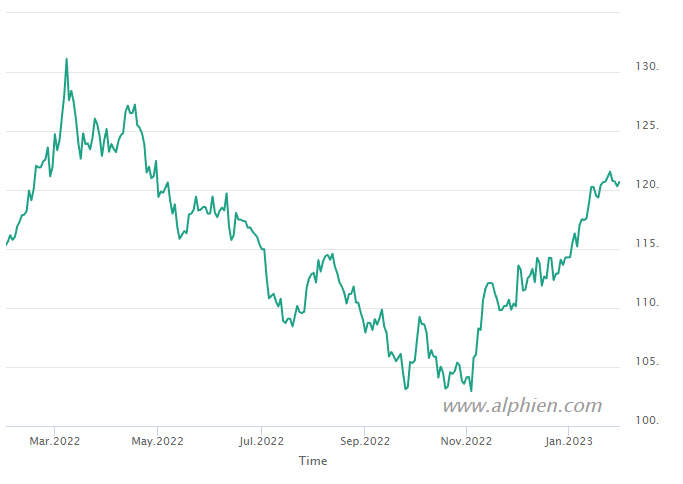Global Macro/Metals
The irrationality of a stronger than expected economy with a lowering inflation expectation provides support for the equity market who are pricing a transient high rate environment. The Fed and the ECB are making the case for further hikes noting that the disinflation process is now underway, thus giving a signal to the market of an ongoing slowing pace of hikes. This partially explains the overly inverted curve and the January rally in risky assets. The base metal complex has also benefited from the expectation of China reopening, which may translate into real deficits in these markets (China represents the majority of the global demand in copper and aluminum). The speed and the extent of the growth impact from China’s reopening will affect the rally in these markets. The less hawkish stance of central banks has played as a catalyst for the short positioned gold market (+5% in January) who has moved higher and continued its rally that started in November, triggered by a historical shift from emerging market central banks to purchase gold at around 1700.
Gold

Energy
Unseasonal warmth on both sides of the Atlantic impacted the energy market greatly in the last month. The seasonal oil demand was affected but is not expected to last as the recent renormalisation of the temperatures shows the seasonality is coming back. Heating oil has been the most affected in the petroleum complex in an environment where Russian crude exports continued to flow to Asia-Pacific (as per normal), with most Indian and Chinese buyers appearing undeterred by the G7-led price cap. China even increased their imports as demand due to reopening was increasing and has, probably, still a long way to go (e.g. airline passenger numbers are still 25% below 2019). Natural gas experienced a huge drop in price (down 34% on the month, down 75% from its peak in September). US natural gas sell off has been beyond all expectations caused by a lack of seasonally related heating demand and reduction of US LNG export due to warmer weather in Europe. Marginal cost of production is around 2 USD/mmBtu, front month price appears to be much closer at 2.5 than seen a few months ago (where it peaked at 10 USD in September).
Volatility
The reduction of geopolitical risk and the warm weather reduced the risks of an energy crisis in Europe (electricity outage and rationing) and has made the overall market volatility diminish across the board. VIX and VSTOXX are now sub 20, which may not be justified given the ongoing geopolitical tensions and economic uncertainties ahead. Commodity volatility has also come down albeit less so and is expected to still trade in a larger range.
Agriculture
Strong harvests in Australia, Brazil and Russia continued to put pressure on prices, particularly on wheat as ample storage was confirmed and Russia’s President, after having hinted otherwise, confirmed the country had no plans to cut export quotas (-4% on the month). Sugar prices moved up nearly 9% on the month due to exports concerns from India (government request to reduce millers exports).

